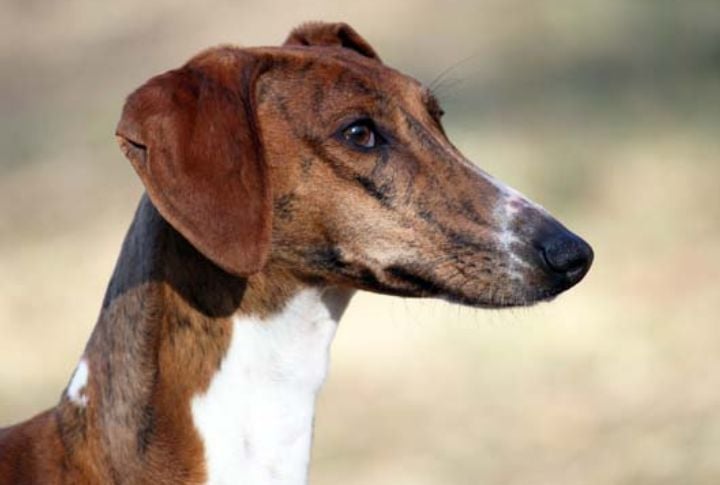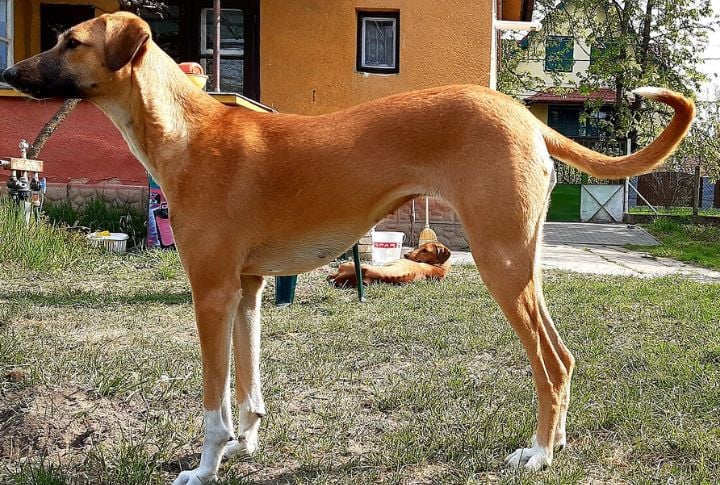15 Things That Separate The Azawakh From The Pack

Certain traits can make a breed stand out. And the Azawakh manages to combine its old heritage with a regal touch in a pretty remarkable way. The way it moves with purpose reveals how much the desert has shaped its very lineage. Here is everything you need to know about this breed.
Originates From Sahelian Africa

The Azawakh originates from the arid Sahelian expanse, where it evolved alongside Tuareg nomads in Mali, Niger, and Burkina Faso over centuries of desert guardianship. This is a breed shaped by extreme heat and sparse terrain. Above that, it carries an Olympian grace with impressive survival skills.
Loyal To A Select Few

You can witness their deep-rooted loyalty firsthand in the Tuareg tribes, where centuries of companionship have forged unbreakable bonds between humans and these dogs. They may not easily win over strangers, but when it comes to their family, they’re completely committed.
Built For Endurance, Not Just Speed

The Azawakhs, known for their endurance, were bred to endure long, challenging desert pursuits. They can reach speeds of nearly 40 mph and still manage their pace well. This helps them save energy and cross the dunes for hours without getting tired.
Ultra‑Low Body Fat Appearance

The Azawakh has a sleek, elegant build, with visible ribs and well-defined muscles. This slim physique is ideal for maintaining coolness in scorching deserts. Those toned muscles and low body fat help regulate body temperature and allow it to stay agile even in intense heat.
Independent Yet Watchful Temperament

Azawakhs are alert and watchful. They keep an eye on their surroundings, using a keen sense of awareness. And while they’re really smart, Azawakhs would rather figure things out for themselves than blindly follow orders. It’s clearly a noble mix of instinct and intelligence.
Natural Guarding Instinct

Azawakhs are born guardians. Growing up with nomadic groups, they quickly pick up the skills to safeguard flocks and campsites. Their deep, rumbling barks ring out with protective energy, alerting their pack of any approaching danger. Unlike some other breeds, these dogs are more about strategic defense.
Gait Resembles That Of A Big Cat

With limbs that stretch like a desert cat’s, it moves in a double-suspension gallop found only among sighthounds. This movement means that at certain points in their stride, all four feet are off the ground—twice per cycle—giving them a floating, almost feline grace.
Sparse Coat And Skin Sensitivity

Their thin coat doesn’t offer much protection from the weather, so be prepared to take extra care of their skin in really hot or cold conditions. You’ll notice they have less fur on their sides and belly. This is typical for a breed from the Sahara because those areas don’t require much insulation in the heat.
Culturally Embedded Symbolism

The Azawakh holds a special place among the Tuareg tribes. Elders have always valued these beautiful sighthounds, which shows in their artwork and stories. When you spot them at ceremonies, you sense their importance. They add prestige and provide a sense of protection.
Rare In The United States

In the U.S., the Azawakh is a rare breed with under 500 registered (according to AKC stats). You’ll mostly see them at specialty shows and sighthound events. Their small numbers result from strict registration rules and low interest. But you can reach out to breed clubs to connect with other owners.
Prey Drive Defines the Pursuit

Having the “prey drive” is an important trait of the Azawakh. It nudges them naturally to chase small animals across wide open spaces, usually with nomads. You’ll notice this strong chasing instinct during their recall training. To manage this energy safely, trainers suggest using strong fencing.
Surprising Soft Voice

Azawakhs have a surprisingly soft voice when communicating. They tend to use gentle yips and low woofs with their family and pack, which are easy to miss unless you’re nearby. Those who appreciate tranquility will appreciate their calm demeanor, which makes them excellent companions.
Swift Physical Maturation

Azawakhs grow quickly, reaching close to adult height by nine months—faster than other sighthounds, like the Irish Wolfhound, who take longer. At six months, they experience a growth spurt, and their bones start to strengthen. You’ll want to tweak their training to keep up with their growth!
Exceptional Daytime Vision

Azawakhs have fantastic eyesight. They can spot objects far away and notice even the tiniest movements of small prey. Desert hunters relied on this sharp vision to find their targets at dawn and dusk. Their keen eyes also help them find their way through rough paths.
Nutritional Sensitivity Demands Precision

Are you aware that some Azawakhs may have grain intolerance and digestive problems? Stick to high-protein, limited-ingredient foods to help keep your pet’s muscles lean. When trying new ingredients, be sure to add them in small amounts to observe any sensitivities.





